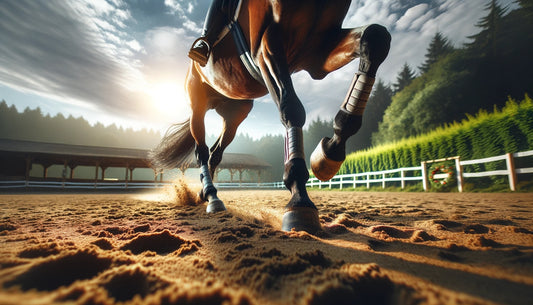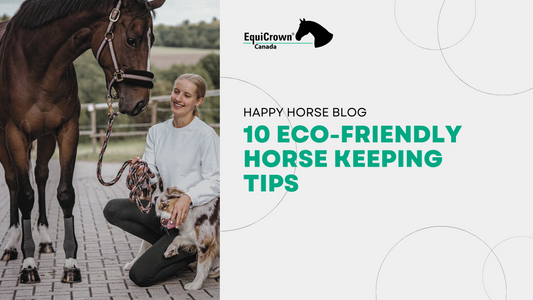
13 Safety Rules When Handling Horses
Safety rules are an essential aspect when learning how to handle your horse. Horses are strong, instinctual animals, and we, as riders and horse owners, should dedicate time to learn more about how to handle them safely.
Horse handling can be dangerous if you don’t take some precautionary measures to avoid kicks, drags, or bites.
These simple rules will help you learn how to stay safe around horses, and they are vital for novices and children. Read on to find out how to keep yourself and your family safe around horses.
1. Never stand directly behind a horse.
This is the first rule in any horse safety manual, and it’s essential to follow it at all times, especially if you’re a first-time horse owner. When you stay directly behind it, a horse may not see you, get scared, and kick you.
If you have children, it’s the first thing you must teach them to make sure they are safe around your horse.
2. How To Approach Your Horse
Learning how to approach your horse is critical, and it’s the first step you should take to make sure you are safe around him.
When approaching your horse, make sure you talk to him and make him aware of your presence. This way, it will always know where you are and what your intentions are. Approach your horse by his shoulder or to the side to avoid any blind spots he might have. Sudden moves within his blind spots might frighten horses and make them react on instinct.
After safely approaching, you can pet your horse by gently placing your hand on his shoulder or neck.
3. How To Lead Your Horse
When leading your horse, make sure you don’t directly grab his halter; always use a rope tied to his halter to protect yourself. Walk beside your horse, usually on the left side, rather than behind him or directly in front of him.
4. How To Turn Your Horse
When turning your horse, protect your legs by always turning him away from you, not towards you. This way, his feet won’t be near your own, and you won’t risk getting hurt.
5. How To Tie Your Horse
Find a reliable and safe object to tie your horse to, and use a rope that’s long enough for comfortable movement but not too long to avoid the risk of getting it tangled.
Using a quick-release knot is recommended, so you can release him if anything goes wrong.
6. How To Groom Your Horse Safely
Even when grooming, the first rule still applies: you’re never supposed to stay behind your horse. You should stand near the shoulder or next to the hindquarters, even when you brush its tail or head.
As you groom him, always be mindful of his feet to avoid any accidents.
7. How To Trailer A Horse
Trailering your horse is not recommended if you are not experienced, and it should be done by two persons if possible. Don’t be afraid to see professional help, especially if you are a beginner.
To proceed, you should first make sure the trailer is empty, safe and it won’t start moving as your horse enters. Start slowly, don’t force your horse, and let him inspect the trailer until he’s comfortable. It might take several tries to get him to load safely, but be patient.
Once he’s inside, close the back door before you hitch him.
8. How To Feed Treats To a Horse
You might want to reward your horse with some treats like carrots or apples, but remember that it’s not safe to feed him by hand. The best way to do this safely is to put the treats in front of your horse or a bucket.
9. What Safety Gear To Use When Handling Horses
When approaching a horse, handling it, or riding it, you should always wear safety gear. Always wear proper boots with hard toes and heels, as well as a helmet. You can also consider using gloves and a protective vest to make sure you don’t get hurt.
 Image Source: Photo by Philippe Oursel on Unsplash
Image Source: Photo by Philippe Oursel on Unsplash
10. How To Mount A Horse
Whenever mounting or dismounting a horse, be sure you’re in a safe place, not near the barn or a fence. Make sure he stands still for mounting and dismounting.
11. How To Ride A Horse Safely
Remember that before you ride a horse, you should be able to control him on the ground.
Always wear the safety gear we mentioned when riding a horse. If you are not experienced, seek the professional help of a trainer before starting.
It’s safer to ride inside an arena or enclosed space until you get used to your horse.
12. Close gates behind you
Get used to always closing gates behind you when dealing with horses to make sure they don’t leave their enclosures. Another important aspect is to close tack rooms all the time, so they don’t get to the grain.
13. Don’t be afraid, be cautious.
Last but not least, you shouldn’t be afraid when dealing with horses. They can read your body language and might be frightened if they see fear. Stick to the precaution measures, be cautious but try to stay calm at all times.
Conclusion
We hope these rules helped you learn how to safely handle your horse and keep yourself and your family or visitors safe. Contact us to learn more about horse safety.




